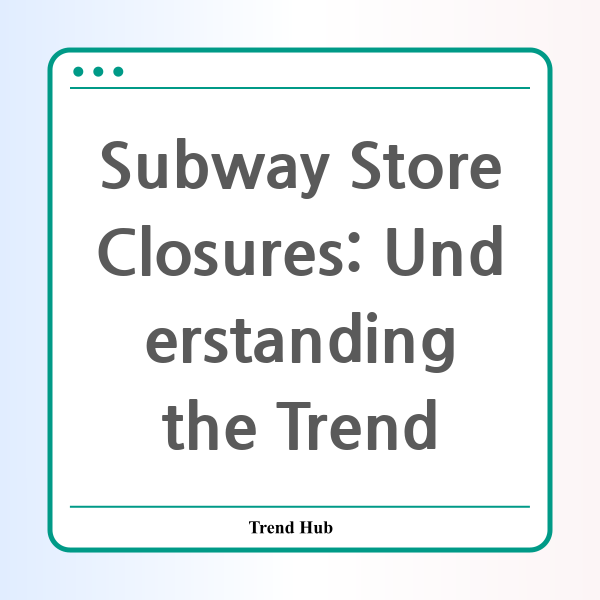* This website participates in the Amazon Affiliate Program and earns from qualifying purchases.

Is Subway losing its grip on the fast food market? The iconic sandwich chain is facing significant challenges, as it recently reported a staggering closure of over 600 stores in the U.S. during the past year. This unprecedented decline in locations has brought Subway's store count below 20,000 for the first time in two decades, leaving many to question its future in an ever-evolving marketplace.
Subway's peak was in 2015, when it boasted around 27,000 locations nationwide. Since then, the company's downward trend has been concerning. According to industry reports, Subway has shut down approximately 7,600 restaurants since 2016—a sign indicating that the franchise is undergoing a painful transformation in response to shifting consumer preferences.
One significant factor in this decline is the changing tastes of American consumers. Many patrons have begun gravitating towards other fast-food options that offer quicker service and greater variety. Additionally, Subway's average sales have lagged behind competitors, which is a crucial metric in the fast food industry. Even as the chain continues to hold onto its status as the largest restaurant chain in the U.S., it has become increasingly clear that simply having the most locations isn't enough to maintain market dominance.
Despite the closures in the U.S., Subway has been expanding its international presence. Currently, the chain operates around 37,000 locations across the globe. Subway is focusing on ‘Smart Growth,’ which involves a strategic, data-driven approach to restaurant placement and experience optimization. Franchisees are encouraged to close underperforming restaurants while still exploring new openings and relocations. This dual strategy aims to enhance customer satisfaction and streamline operations.
In an effort to revitalize its brand, Subway has introduced several improvements, including a fresh store design that emphasizes a more vibrant and welcoming décor. The chain has also rolled out new menu items and promotional strategies, like the return of the $6.99 footlong deal—available exclusively for digital orders. This tactic not only incentivizes app downloads but also adapts to modern consumer habits focused on convenience.
Subway isn't merely adjusting its menu but is also fundamentally altering how it engages with its customers. In a competitive landscape where quick service and quality are key differentiators, Subway is working hard to align itself with modern expectations. Improvements in food preparation—like shifting from pre-sliced cold cuts to freshly cut options—reflect the chain’s commitment to enhancing the dining experience.
However, the closures in markets like Oregon have underscored the human toll of corporate decisions. Former employees have voiced concerns about the lack of communication from the corporate level, leaving them blindsided by unexpected closures. As Subway refines its strategies, balancing the business's needs with those of its employees will be vital for maintaining morale and trust among its workforce.
In conclusion, Subway’s journey through store closures highlights the broader dynamics at play in the fast food industry. As it adapts to challenges and strives to innovate, the chain must remain vigilant in monitoring consumer trends. Will Subway restore its once-unstoppable growth, or will it continue to navigate this tumultuous chapter? Only time will tell, but one thing is certain: the fast food landscape is continually shifting, prompting even legacy brands to rethink their strategies for survival.
* This website participates in the Amazon Affiliate Program and earns from qualifying purchases.